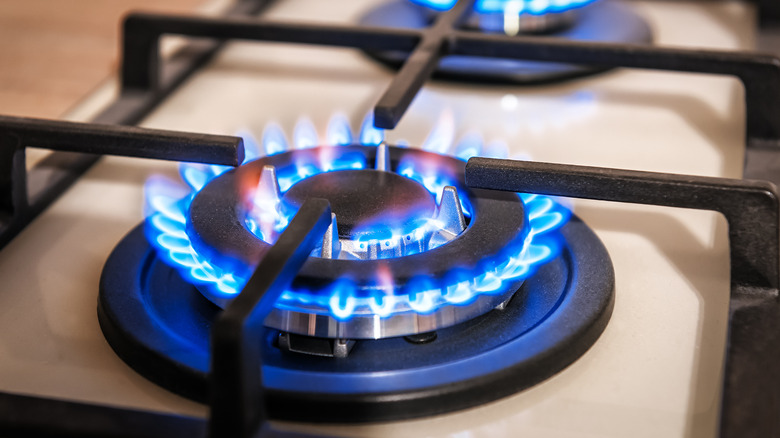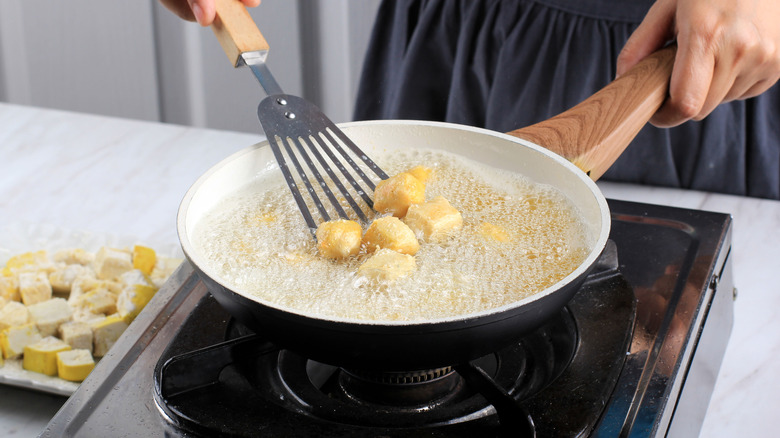Flare-Ups On Gas Stoves Are Preventable With A Few Easy Tips
New York may have officially banned gas stoves earlier this year, but for now, the rest of the country is still going strong using these kinds of ranges. Pro cooks will attest that gas stoves have a few advantages over electrical ones. They warm up quickly when needed, so you spend less time waiting around for a pot to boil, and fire gives a bit more control since (very) direct contact with the heat source isn't required. However, they are susceptible to flare-ups, but it's possible to prevent them if you know what to do.
Even if you're carefully regulating the temperature of your stove, you can get flare-ups if you have too much water in your pan. When that water steams or vaporizes, it can draw hot oil into the air with it, potentially causing a flame. To avoid this, pat your food dry and minimize the amount of water added to your skillet. Likewise, keep any external water (like a cup you're drinking out of) away from a hot stove where you're cooking with oil. If you accidentally spill it into your pan, it can quickly vaporize and spread oil everywhere. You can run into these problems with an electric stove too, but because ignition has already occurred with gas stoves, flammable liquids like oils are primed to go up with a flame present.
How to safely use a gas stove
Aside from keeping too much water away from your gas stove, you can follow a few other guidelines to help prevent flare-ups. For instance, although many stovetop recipes start with a bit of oil in a skillet, it's important not to overdo it. You risk a flare-up if your oil boils over or splatters on a hot burner. When pan-frying (not deep-frying) foods like veggies or meat, you can also try adding a little salt or flour to your skillet after you pour in the oil. It may not eliminate splatters completely, but it can absorb some of the food's moisture and keep bubbling to a minimum, so you have a better chance of keeping it in the pan.
It's also essential to use the right kind of fat for the type of cooking you're doing. For example, when making a stir-fry at high temps, you'll want to use an oil with a high smoke point, like avocado or peanut. Heating cooking oil past its smoke point can lead to a grease fire in as little as 30 seconds. But as long as you follow the basic guidelines for preventing flare-ups, it's entirely possible to use a gas stove safely.

